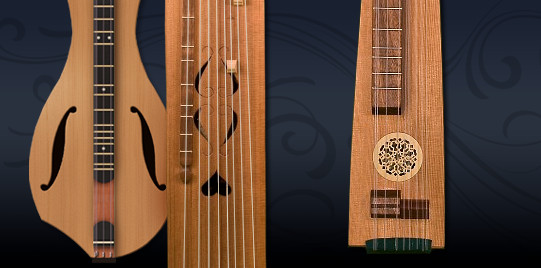Drone zither
As Bordunzithern is known designs of the zither, which have few ( often one), melody strings, while the other strings are only as background music with chipped to a sustained note, a drone to bring forth. The number of strings, the type of strings, the shape of the body, the mechanics, mood and other structural characteristics vary between different cultures and epochs, as well as within them.
History
The earliest documented form of Bordunzither is the Scheitholt (including logs), which is mentioned in 1619 by Michael Praetorius in Syntagma Musicum and there - called " LumpenInstrumentum " - performs poorly. The Scheitholt consists of an elongated body in the form of a cuboid, at the head end to a simple vortex board is similar to how it used to guitars and other plucked instruments. It is covered with three or four brass strings. A fingerboard in the usual sense does not exist, the frets are created by directly embarked into the ceiling nails.
In Germany variants of Scheitholt with one or two melody strings and several drone strings were widespread. In northern and central Germany they were called Hummel, in southern Germany as Scherr zither or raffele and Switzerland as witches log.
In France, soon developed the épinette des Vosges that has no clearly defined shape or fabric and has very different forms. A Hungarian form of Bordunzither (also called "horse -headed Citera " there) is characterized by a plurality of stepped eddy heads, on which up to 20 drones are partly attached. In Iceland, the instrument is known as Langspil and Norway as langeleik.
However, most well-known is probably the American form of the Mountain Dulcimer or Appalachian Dulcimer (not to be confused with the Hammered - Dulcimer or Bowed - dulcimer), which evolved from the Bordunzithern of European immigrants from England and Ireland and in the American folk music until today has its place.









